Getting struggling students to write a narrative essay can be like pulling teeth. It’s frustrating when you walk by a student’s desk after you teach a writing lesson and see that they have only two sentences written down. Two!
And this is after 30 minutes of writing. I kid you not!
So what do you do as an educator to help a struggling writer? First, take a deep breath and know that writing doesn’t come easily to some.
Understanding Students Who Struggling with Narrative Writing
Most students who struggle with writing face challenges with organizing their thoughts. And that’s okay!
It’s not that students don’t want to write, it’s just that writing is one of the most cognitively demanding activities that we can ask of our students.
Research from Advances in Cognitive Psychology has found that “writing overloads working memory more than reading and listening”.
It’s a cognitively complex task and just plain hard for many students. So how do you support your students with narrative writing? Here are a few of my favorite strategies.
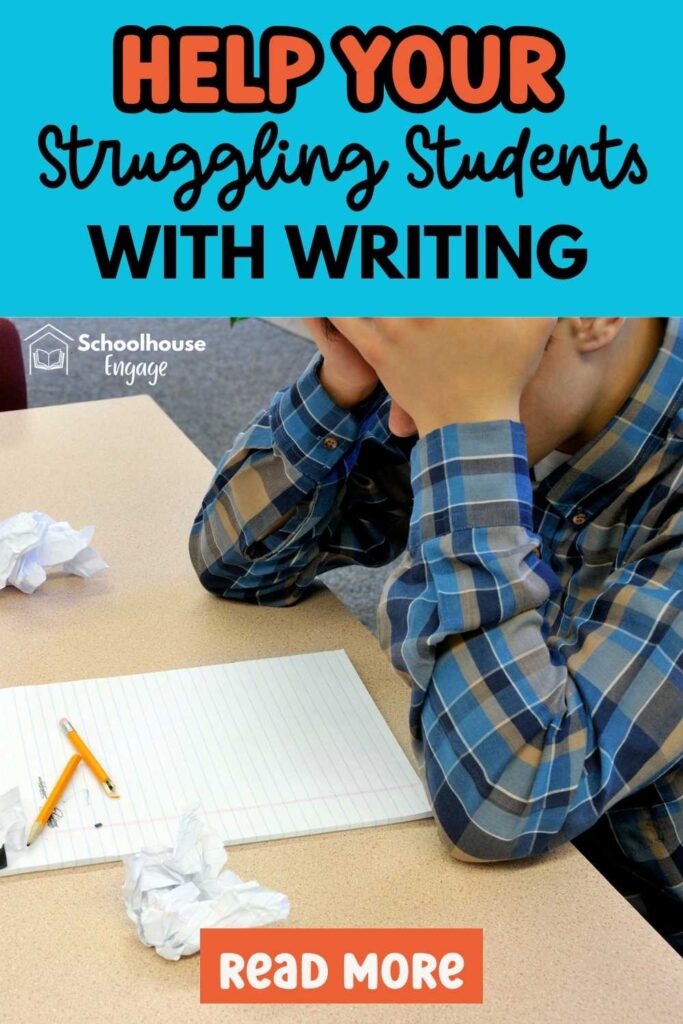
Strategies to Help Struggling Writers
Break down the writing process into bite-sized steps
Writing takes time! If you want your students to write a quality writing piece, they will need at least a week to write it. Do not expect your students to write it in a few days. Struggling students need the writing process to be broken down, so that on Day 1 they are just working on brainstorming, and on Day 2 they write their introduction. I wrote a blog post on a specific lesson plan to teach struggling students the writing process. You can find it HERE.
Use a Color Coded Graphic Organizer
Incorporating graphic organizers and visual aids can transform narrative writing. Have your students organize their ideas in a graphic organizer or a thinking map before they start writing. They can easily make one with blank paper and markers.
Before they start working on their graphic organizer, model an example on large chart paper.
- Color code the introduction blue (or whatever color you choose). Inside the box, the writing should be in blue.
- Continue with your second paragraph in red and again the writing should be in red.
- Each paragraph in the body needs to be a different color.
- Your conclusion should be the same color as your introduction so that students understand that the introduction and conclusion both explain the main points in the essay.
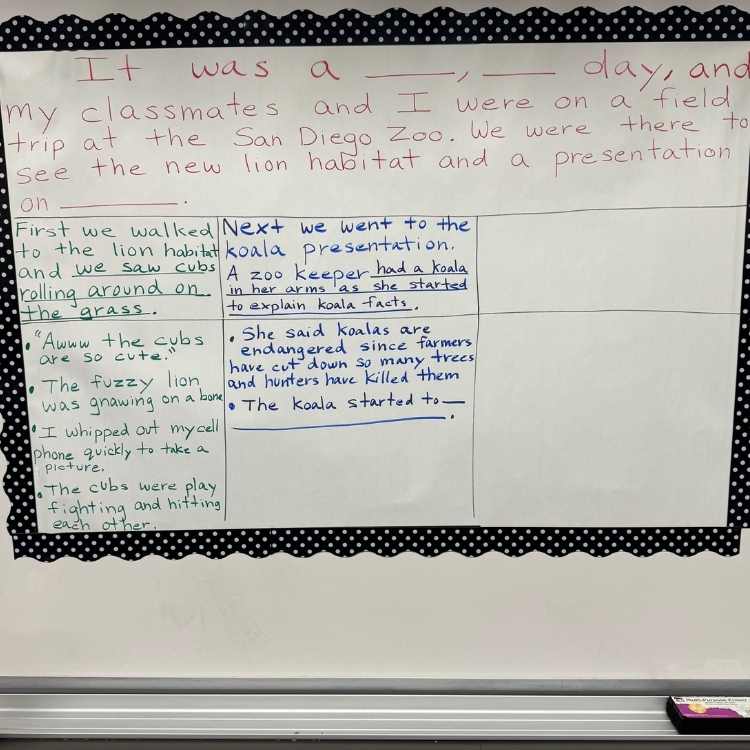
When students start typing their essays, I create a Doc in Google and add colored rectangles that they need to write inside. You can get a copy of one HERE. Just make sure to make a copy for yourself.
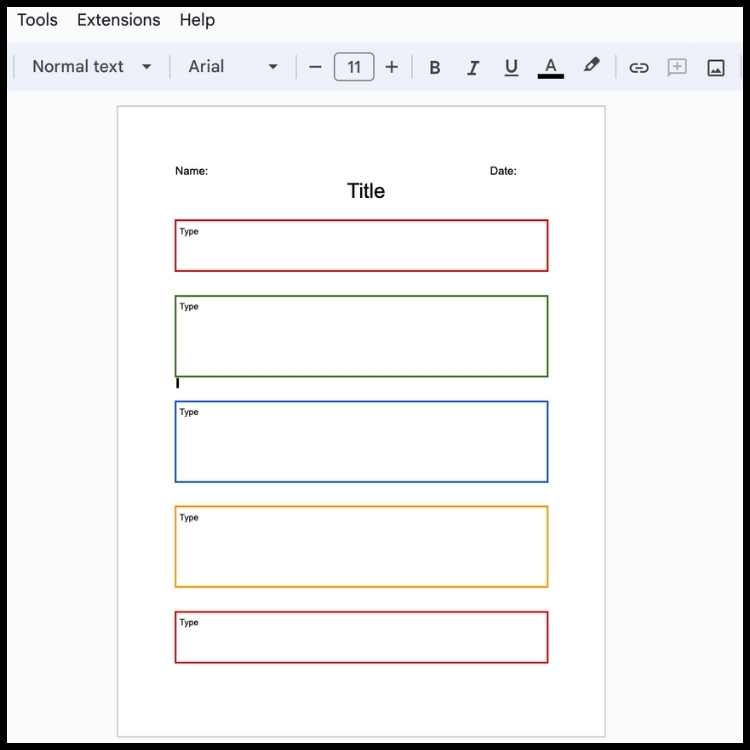
Another option is to write with a colored font that corresponds to the sections. Make sure that you write a sentence in the color for that paragraph. Then the only thing students will need to do is, delete it, and start typing.
Encourage More Writing by Adding Details
Struggling students oftentimes are limited in what they want to say. Usually, their writing is short and they just need to write more by adding details. I created a visual to help them do that with questions that they need to answer.
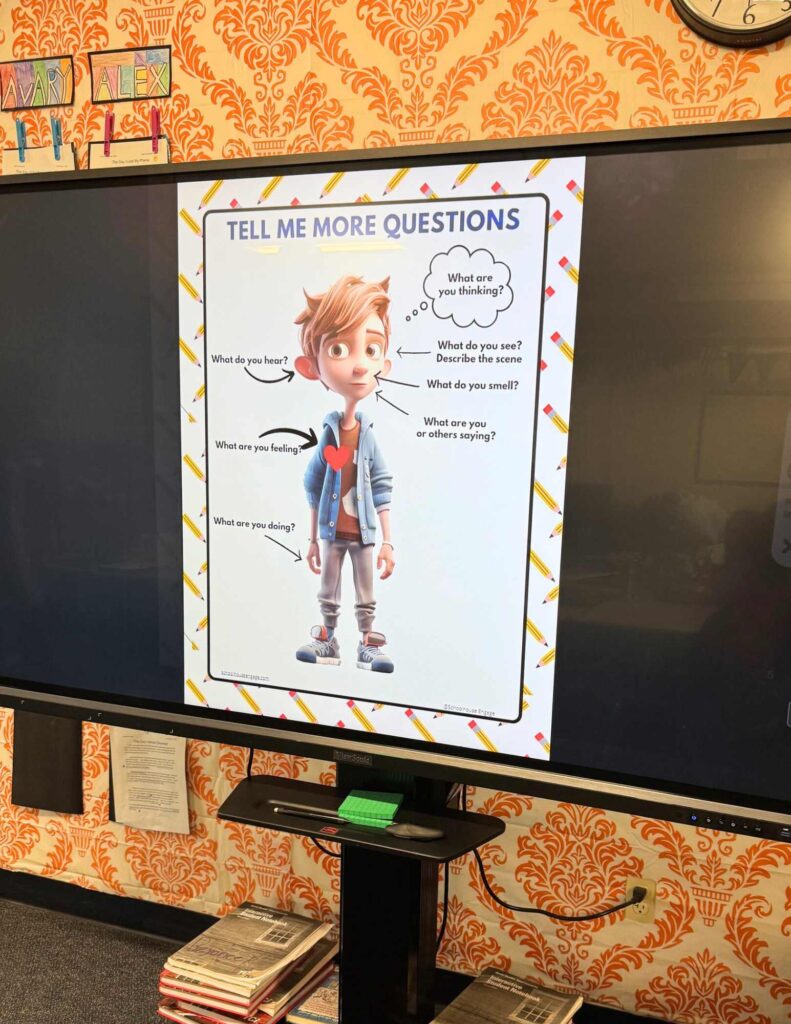
I display it while students are working on their writing and refer to it when I’m trying to get them to write more. You can grab a free printable of it which is sized for a 3-ring binder or a small notebook.
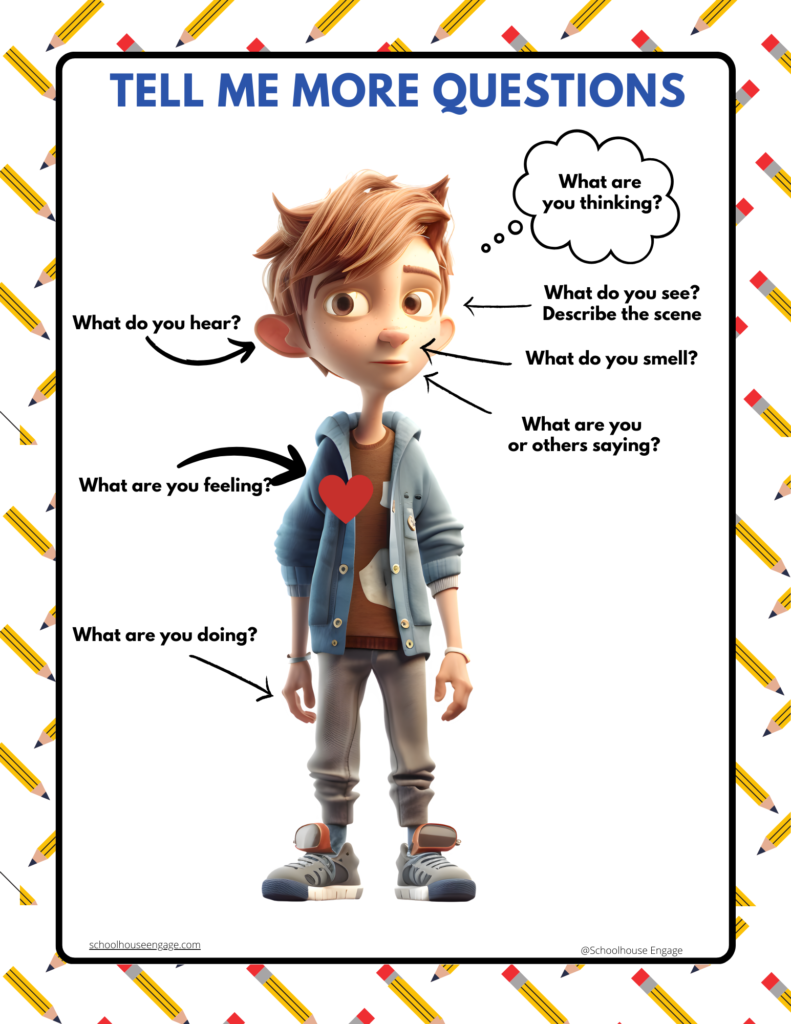
Download for FREE
Get your FREE Tell Me More Questions Printable. You’ll also receive my best teaching tips and FREE resources. Opt-out anytime.
Differentiate Instruction
Writing is not a one-size-fits-all approach. Every student is a unique writer, and modifying the writing assignment for struggling writers is key. I normally ask that my students have at least 5 paragraphs with a total of 17 sentences in their essays. For a struggling writer, this is a daunting task.
Oftentimes, my at-grade level students will be finishing their narrative essays while my struggling students are barely finishing their introductions. When this happens, I modify the work and ask them to only write 3-4 paragraphs instead of 5. Be flexible and modify the work depending on the students.
Encourage Peer Collaboration and Feedback
Peer collaboration and feedback create a classroom of supportive writers. Have your students partner up to fine-tune their narratives. This is a full-day writing lesson.
Make sure that you choose partners and don’t let your students just buddy up with a friend. Strategically partner up students who are strong writers with the ones who need extra help.
There shouldn’t be a huge difference in their writing levels. This can cause some frustration with very advanced students.
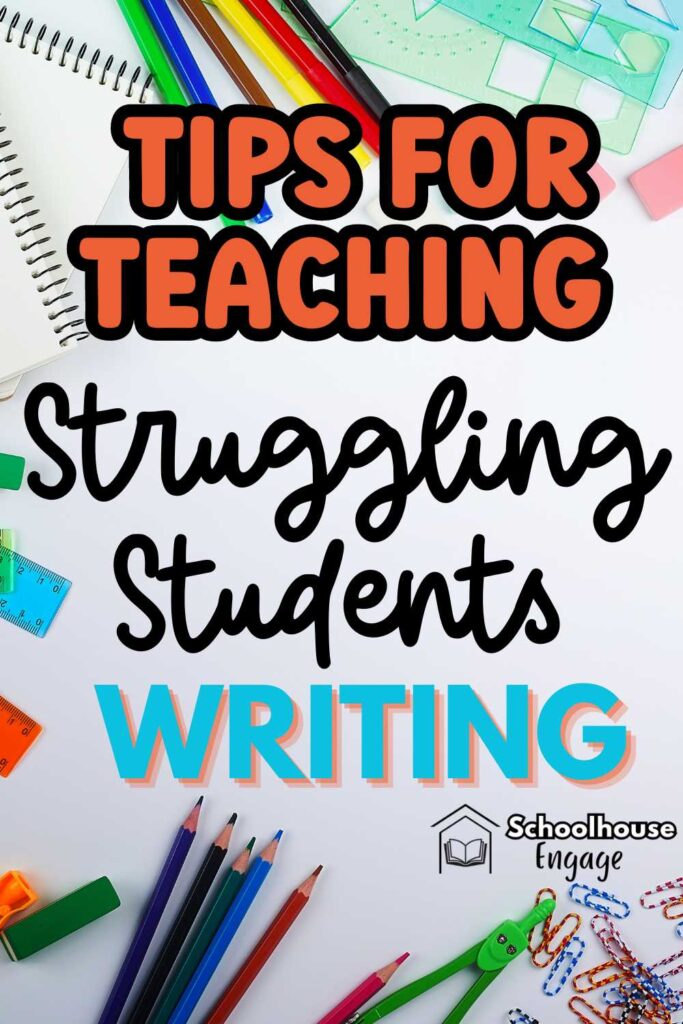
Guidelines for peer revising and editing.
Here are some rules I go over before my students work with their partner:
- Students need to sit so that the person who wrote the essay can read it aloud while the other person can see the essay at the same time. Students can’t sit face-to-face, they must sit side-by-side.
- After every paragraph, the partner should give some sort of feedback.
- Each student must say at least two positive compliments. Write on the board ideas of compliments they can give.
- They need to give constructive criticism about three things that we have focused on. For example, I might ask my students to make sure their partner included dialogue, one form of figurative language, and personal thoughts, and to give feedback about that.
Teach Your Student to Utilize Google Doc or Word
If you are still using paper and pencil to have your students write their essays, think again. Struggling students are better off writing their narrative essays on an online document using their computer (aren’t we all!). It will be easier for you to grade too.
When students write their essays on their computer, they don’t need to worry about spelling which can sometimes hinder them from getting their thoughts down.
Require Spell Check
Speaking of spelling, make sure your students are using spell check. I make this a requirement. Teach your students how to use these tools explicitly. They need to correct any words they see with a red line underneath them. Don’t assume that your students already know how to do this.
Teach How to Look Up Synonyms
Teach your struggling students to open another window to look for synonyms of other words. Struggling writers need to know how to use these tools.
Allow your students to change the font of their writing and add pictures to their essays. This makes the experience of writing fun and allows for some creativity.
Show Writing Examples
Showing your students writing examples gives them a clear message of what your expectations are but it also lowers anxiety for students who struggle with writing. Share exemplary writing pieces that have all the aspects of writing that you are grading for.
I like to show my students essays that received a 4 (which is the highest grade in my school district) but I also show them what a 3, 2, and 1 look like.
If you need mini-lessons to teach students how to add details. I have a Show, Don’t Tell Writing Lesson Halloween Theme. You can grab it HERE.
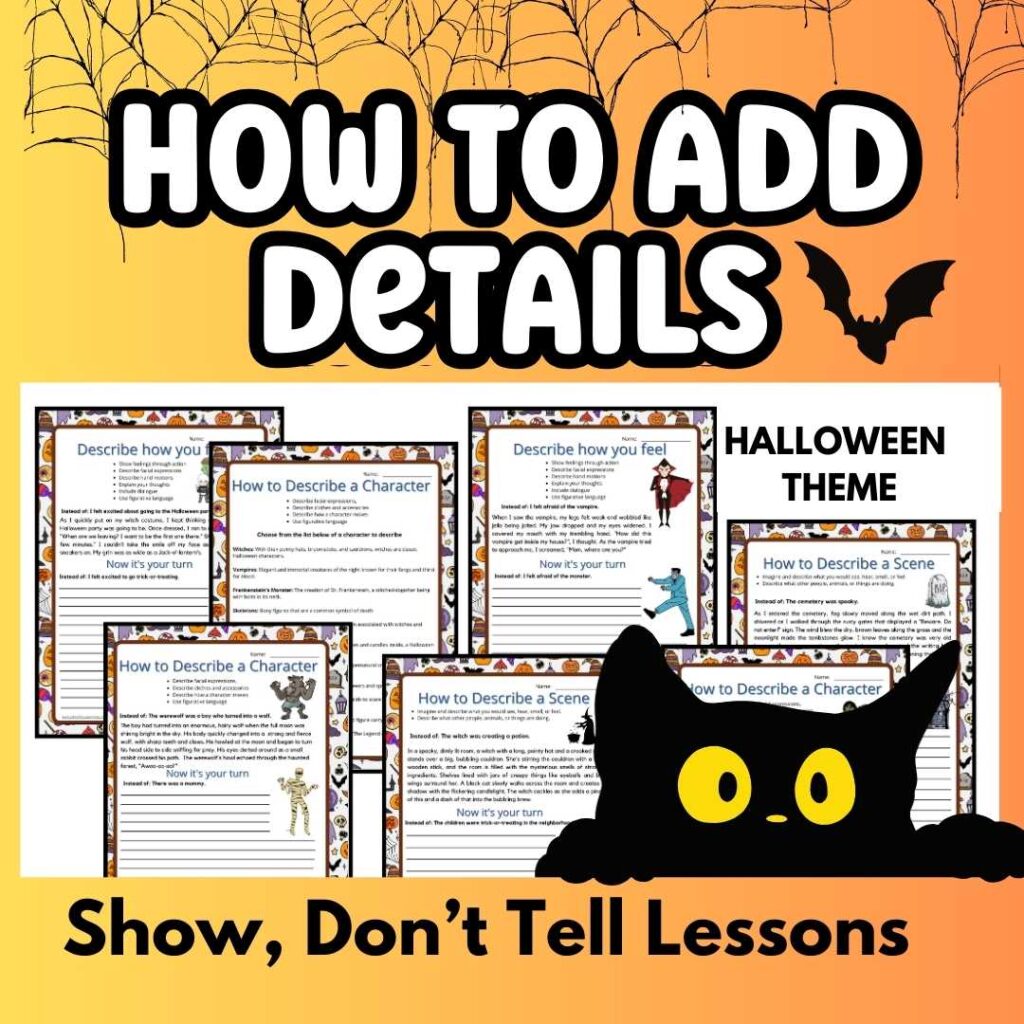
Final Thoughts
Many students struggle with narrative writing, but by incorporating these tips, your students will discover that writing is something they can do. Every student has a story to tell, and with a bit of guidance, they can be empowered to show their creativity and true potential. You got this! Giselle

